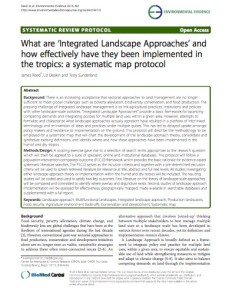Focal point
Location
The Center for International Forestry Research (CIFOR) is a non-profit, scientific facility that conducts research on the most pressing challenges of forest and landscapes management around the world. With our global, multidisciplinary approach, we aim to improve human well-being, protect the environment, and increase equity. To do so, we help policymakers, practitioners and communities make decisions based on solid science about how they use and manage their forests and landscapes.
Capacity building, collaboration and partnerships are essential to finding and implementing innovative solutions to the challenges that the globe faces. We are proud to work with local and international partners. We are a member of the CGIAR Consortium and lead the CGIAR Research Program on Forests, Trees and Agroforestry.
Our headquarters are in Bogor, Indonesia. We have offices in 8 countries across Asia, Latin America and Africa, and we work in more than 30 countries. Contact us for more information.
Resources
Displaying 136 - 140 of 808REDD+ Chia se loi ích
Sinergi Mitigasi - Adaptasi
What are ‘Integrated Landscape Approaches’ and how effectively have they been implemented in the tropics: a systematic map protocol
This protocol will describe the methodology to be employed for a systematic map that will chart the development of the landscape approach theory, consolidate and synthesize existing definitions, and identify where and how these approaches have been implemented in the humid and dry tropics.
El contexto de la deforestación y degradación de los bosques en Bolivia: de los bosques en Bolivia
Bolivia cuenta con una importante superficie de bosques, mayormente en su región sub-tropical y tropical. La deforestación alcanza aproximadamente 200.000 hectáreas por año, sobre todo en las tierras bajas, mientras que la degradación de bosques es más acentuada en los bosques andinos. La ganadería es actualmente la principal causa directa de deforestación, seguida por la agricultura mecanizada de mediana y gran escala, mayormente para la producción de soya, y luego la agricultura a pequeña escala.




